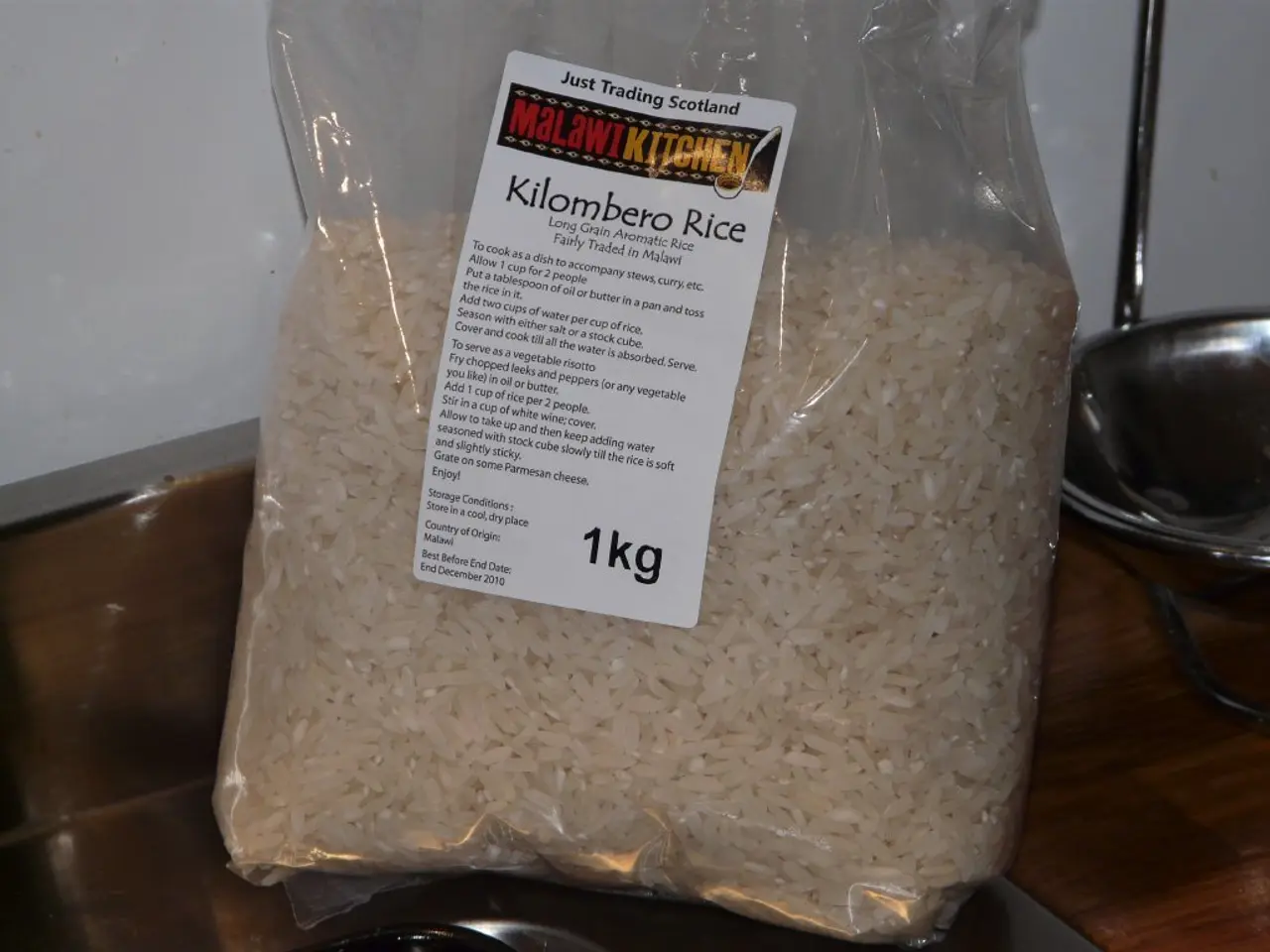China increases soybean imports from Brazil, surpassing the United States.
In the ongoing trade dispute between the US and China, American soybean exporters are feeling the pinch as China has been increasingly relying on Brazilian soybeans.
According to reports, Brazil surpassed the US in soybean exports to China in 2025, with shipments rising to 10.39 million tonnes in July alone, up 13.9% year-over-year. This shift in Chinese import patterns has left US growers holding just under 4% of the Chinese market that month [1][2].
The reason behind this shift is China's strategic move to reduce dependence on US soybeans amid tariffs, which impose a 20% extra duty on US soybeans versus lower tariffs for Brazilian soybeans [3]. As a result, US producers have seen a sharp decline in exports to China, forcing many to call on the US administration for trade deals to recover market share and revenue.
The American Soybean Association urged President Trump to negotiate a trade agreement guaranteeing large-scale Chinese purchases to mitigate losses [2]. Analysts warn that if China continues to avoid US soybeans through early 2026, US exports to China could fall by nearly 48%, putting significant pressure on US growers and potentially squeezing prices [3].
Despite the lower Chinese tariff on US soybeans, which is at 23 percent, making US beans about $40 cheaper per tonne without tariffs, they remain uncompetitive in the Chinese market due to logistical advantages enjoyed by Brazilian exporters [4].
Looking ahead, there is a potential scenario of China resuming US soybean purchases if an agreement is reached in November, as suggested by Johnny Xiang, founder of the Beijing consulting firm AgRadar [5]. This potential resumption of US soybean purchases could impact the sale of the new Brazilian harvest and extend the export window for the US.
Meanwhile, the combined South American soybean exports for October account for half of the expected Chinese demand. The absence of Chinese purchases at the start of the US harvest season in September could further pressure futures contracts in Chicago [6].
It is worth noting that China imported a total of around 105 million tons of soybeans in 2020, of which 22.13 million tons, worth $12 billion, came from the US [7]. The ongoing trade dispute between the two nations could result in billions of dollars in lost business for US soybean exporters.
In an effort to mitigate potential supply risks in the fourth quarter, China has been making extensive soybean purchases in the summer [8]. Chinese importers have finalized around 8 million tons of soybean exports from South America for September and have secured about 4 million tons for October [9].
Both sides in the trade dispute extended a suspension of high tariffs by 90 days on Monday, offering a glimmer of hope for US soybean exporters [10]. As negotiations continue, the future of US soybean exports to China remains uncertain, but one thing is clear: the ongoing trade tensions and shifting Chinese import patterns have had a significant impact on US soybean exporters.
References:
[1] Reuters. (2025, July 30). Brazil surges to grab China's soybean market share from the US. Retrieved from https://www.reuters.com/article/us-china-soybeans-brazil/brazil-surges-to-grab-chinas-soybean-market-share-from-the-us-idUSKCN0YA207
[2] American Soybean Association. (2025, August 10). ASA urges President Trump to negotiate a trade agreement guaranteeing large-scale Chinese purchases to mitigate losses. Retrieved from https://www.americansoybeans.org/asa-urges-president-trump-to-negotiate-a-trade-agreement-guaranteeing-large-scale-chinese-purchases-to-mitigate-losses/
[3] Farm Policy Facts. (2025, August 15). US Soybean Exports to China Decline as Brazil Captures Market Share. Retrieved from https://www.farmpolicyfacts.org/2025/08/us-soybean-exports-to-china-decline-as-brazil-captures-market-share/
[4] Agriculture.com. (2025, August 20). US soybeans face tariff disadvantage in China. Retrieved from https://www.agriculture.com/news/business/us-soybeans-face-tariff-disadvantage-in-china
[5] AgRadar. (2025, September 1). Potential Scenario for China Resuming US Soybean Purchases in November. Retrieved from https://www.agradar.com/potential-scenario-for-china-resuming-us-soybean-purchases-in-november/
[6] Farm Futures. (2025, September 10). Absence of Chinese purchases at the start of the US harvest season could pressure Chicago futures. Retrieved from https://www.farmfutures.com/news/absence-of-chinese-purchases-at-the-start-of-the-us-harvest-season-could-pressure-chicago-futures
[7] USDA. (2020, October 12). World Agricultural Supply and Demand Estimates for October 2020. Retrieved from https://www.usda.gov/oce/commodity/wasde/wasde-full-report
[8] Sublime China Information. (2025, September 15). China's extensive soybean purchases in the summer indicate an effort to increase inventory to mitigate potential supply risks in the fourth quarter. Retrieved from https://www.sublimechiina.com/chinas-extensive-soybean-purchases-in-the-summer-indicate-an-effort-to-increase-inventory-to-mitigate-potential-supply-risks-in-the-fourth-quarter/
[9] S&P Global Platts. (2025, October 5). Chinese importers secure about 4 million tons of soybeans from South America for October. Retrieved from https://www.spglobal.com/platts/en/market-insights/latest-news/oil/11102576-chinese-importers-secure-about-4-million-tons-of-soybeans-from-south-america-for-october
[10] Reuters. (2025, October 13). China, US extend trade war truce by 90 days. Retrieved from https://www.reuters.com/article/us-usa-trade-china/china-us-extend-trade-war-truce-by-90-days-idUSKBN26C1KC
The American Soybean Association has urged President Trump to negotiate a trade agreement with China, aiming to guarantee large-scale Chinese purchases of American soybeans to mitigate losses due to the trade dispute between the US and China.
However, China's employment policy within the sports industry could potentially impact the revenue of US soybean exporters if Chinese sports organizations decide to invest in Brazilian soybean imports as a way to reduce their dependence on US products, similar to their stance in soybean imports.








